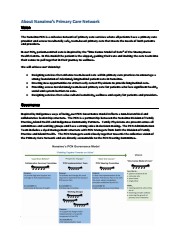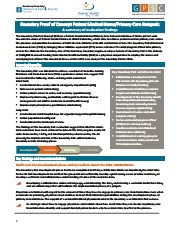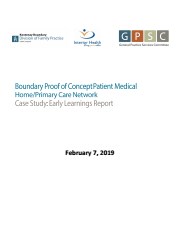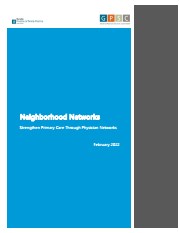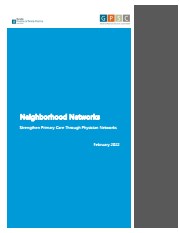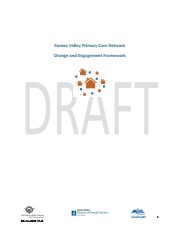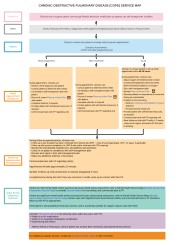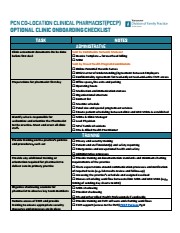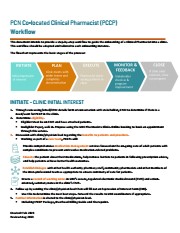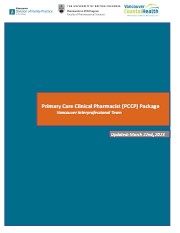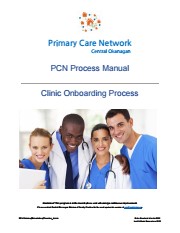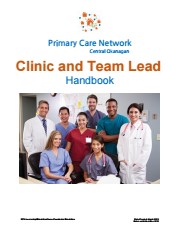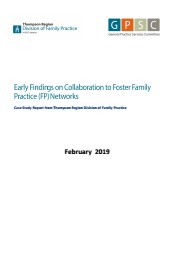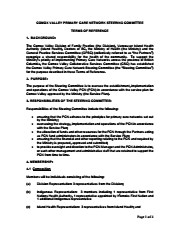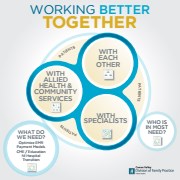204 public records – page 1 of 11. — Log in to view all records
30/60/90 Day Nurse Coordinator Check-In Template - Central Okanagan
https://www.jcc-resourcecatalogue.ca/en/permalink/divisionresource1710
- Program
- Primary Care Networks
- Description
- "This document shows an example of a nurse coordinator check-in template. It was created by the Central Okanagan PCN and can be used as a guide or template by other PCNs."
- Program
- Primary Care Networks
- Personal Author
- Central Okanagan PCN
- File Type
- Word
- Description
- This document shows an example of a nurse coordinator check-in template. It was created by the Central Okanagan PCN and can be used as a guide or template by other PCNs.
About PCN Document - Nanaimo
https://www.jcc-resourcecatalogue.ca/en/permalink/divisionresource1656
- Program
- Primary Care Networks
- Link to File
- /media/divresources/Nanaimo-PCN-ABOUT.pdf
- Description
- "This document shows an example of a introduction to a local PCN. It was created by the Nanaimo PCN and can be used as a guide or template by other PCNs."
- Program
- Primary Care Networks
- Personal Author
- Nanaimo PCN
- File Type
- Link to File
- /media/divresources/Nanaimo-PCN-ABOUT.pdf
- Description
- This document shows an example of a introduction to a local PCN. It was created by the Nanaimo PCN and can be used as a guide or template by other PCNs.
Attachment Coordinator Job Description Template
https://www.jcc-resourcecatalogue.ca/en/permalink/divisionresource1633
- Published Date
- 2024-02-05
- Description
- "This is a template job description for an Attachment Coordinator position. Each Division of Family Practice can adapt this job description to ensure the best use of resources within their geography, but the position summary and responsibilities listed in this template should remain standard as per the FPSC Attachment Mechanism Funding Guidelines."
- Corporate Author
- Family Practice Services Committee
- Published Date
- 2024-02-05
- Topics
- Attachment
- Primary Care Network
- Resource Type
- Job Description
- File Type
- Word
- Description
- This is a template job description for an Attachment Coordinator position. Each Division of Family Practice can adapt this job description to ensure the best use of resources within their geography, but the position summary and responsibilities listed in this template should remain standard as per the FPSC Attachment Mechanism Funding Guidelines.
Boundary Proof of Concept Patient Medical Home/ Primary Care Network: A summary of evaluation findings
https://www.jcc-resourcecatalogue.ca/en/permalink/divisionresource1179
- Health Authority
- Interior
- Division
- Kootenay Boundary Division of Family Practice
- Published Date
- 2019-01-08
- Link to File
- /media/divresources/BoundaryPoCProvincialSummary.pdf
- Description
- "The document was provided during the GPSC Patient Medical Home Evaluation Webinar. It draws on the GPSC case study of the Boundary PoC in 2018."
- Health Authority
- Interior
- Division
- Kootenay Boundary Division of Family Practice
- Corporate Author
- General Practice Services Committee
- Kootenay Boundary Division of Family Practice
- Published Date
- 2019-01-08
- Event
- GPSC Patient Medical Home Evaluation Webinar
- Resource Type
- Summary
- File Type
- Link to File
- /media/divresources/BoundaryPoCProvincialSummary.pdf
- Description
- The document was provided during the GPSC Patient Medical Home Evaluation Webinar. It draws on the GPSC case study of the Boundary PoC in 2018.
Boundary Proof of Concept Patient Medical Home/Primary Care Networks - Case Study
https://www.jcc-resourcecatalogue.ca/en/permalink/divisionresource1395
- Health Authority
- Interior
- Division
- Kootenay Boundary Division of Family Practice
- Published Date
- 2019/02
- Link to File
- /media/divresources/BoundaryPoCCaseStudy.pdf
- Description
- "This case study is broken into the following main sections: 1) overview of case study approach, 2) Overview of Boundary PoC design and implementation, 3) Key outcomes achieved to date, 4) Key Boundary PoC successes, 5) Key enablers of success in the Boundary PoC process, 6) Key Boundary PoC challenges; and 7) Conclusions and recommendations."
- Health Authority
- Interior
- Division
- Kootenay Boundary Division of Family Practice
- Corporate Author
- General Practice Services Committee
- Kootenay Boundary Division of Family Practice
- Interior Health Authority
- Published Date
- 2019/02
- Resource Type
- Case Study
- File Type
- Link to File
- /media/divresources/BoundaryPoCCaseStudy.pdf
- Description
- This case study is broken into the following main sections: 1) overview of case study approach, 2) Overview of Boundary PoC design and implementation, 3) Key outcomes achieved to date, 4) Key Boundary PoC successes, 5) Key enablers of success in the Boundary PoC process, 6) Key Boundary PoC challenges; and 7) Conclusions and recommendations.
Burnaby DoFP Neighbourhood Networks Case Study - Executive Summary
https://www.jcc-resourcecatalogue.ca/en/permalink/divisionresource1605
- Division
- Burnaby Division of Family Practice
- Published Date
- 2022-02
- Description
- "This document is the executive summary of the Burnaby DoFP Neighbourhood Networks case study. As part of GPSC commitment to the development of physician networks as a key component of primary care system change, the Burnaby DoFP Neighborhood Network case study explores the development and implementation of three neighborhood networks in Burnaby. The creation of neighborhood networks in Burnaby was prompted by family physicians who recognized the need to bring together family physicians from across local communities to increase their interconnectedness, provide opportunities for local Primary Care Network planning, and enable methods for sharing care with each other with the goal of improving patient access to medical care across Burnaby. Burnaby’s neighborhood networks have supported family physicians to connect socially, learn from each other, identify options for locum coverage and after-hours care, and support referrals to specialist care throughout the networks. Key outcomes: family physicians were able to increase patients’ access to care by referring patients to their family physician peers, expanding their use of locums, working on the development of an Urgent and Primary Care Clinic, and procuring additional healthcare resources for the neighborhood networks. A discussion of the neighborhood network's future goals and next steps is included."
- Division
- Burnaby Division of Family Practice
- Corporate Author
- General Practice Services Committee
- Published Date
- 2022-02
- Resource Type
- Summary
- File Type
- Description
- This document is the executive summary of the Burnaby DoFP Neighbourhood Networks case study. As part of GPSC commitment to the development of physician networks as a key component of primary care system change, the Burnaby DoFP Neighborhood Network case study explores the development and implementation of three neighborhood networks in Burnaby. The creation of neighborhood networks in Burnaby was prompted by family physicians who recognized the need to bring together family physicians from across local communities to increase their interconnectedness, provide opportunities for local Primary Care Network planning, and enable methods for sharing care with each other with the goal of improving patient access to medical care across Burnaby. Burnaby’s neighborhood networks have supported family physicians to connect socially, learn from each other, identify options for locum coverage and after-hours care, and support referrals to specialist care throughout the networks. Key outcomes: family physicians were able to increase patients’ access to care by referring patients to their family physician peers, expanding their use of locums, working on the development of an Urgent and Primary Care Clinic, and procuring additional healthcare resources for the neighborhood networks. A discussion of the neighborhood network's future goals and next steps is included.
Burnaby DoFP Neighbourhood Networks Case Study - Full Report
https://www.jcc-resourcecatalogue.ca/en/permalink/divisionresource1606
- Division
- Burnaby Division of Family Practice
- Published Date
- 2022-02
- Description
- "This document details the full case study on the Burnaby DoFP Neighborhood Networks. As part of GPSC commitment to the development of physician networks as a key component of primary care system change, the Burnaby DoFP Neighborhood Network case study explores the development and implementation of three neighborhood networks in Burnaby. The creation of neighborhood networks in Burnaby was prompted by family physicians who recognized the need to bring together family physicians from across local communities to increase their interconnectedness, provide opportunities for local Primary Care Network planning, and enable methods for sharing care with each other with the goal of improving patient access to medical care across Burnaby. Burnaby’s neighborhood networks have supported family physicians to connect socially, learn from each other, identify options for locum coverage and after-hours care, and support referrals to specialist care throughout the networks. Key outcomes: family physicians were able to increase patients’ access to care by referring patients to their family physician peers, expanding their use of locums, working on the development of an Urgent and Primary Care Clinic, and procuring additional healthcare resources for the neighborhood networks. A discussion of the neighborhood network's future goals and next steps is included."
- Division
- Burnaby Division of Family Practice
- Corporate Author
- General Practice Services Committee
- Published Date
- 2022-02
- Resource Type
- Case Study
- File Type
- Description
- This document details the full case study on the Burnaby DoFP Neighborhood Networks. As part of GPSC commitment to the development of physician networks as a key component of primary care system change, the Burnaby DoFP Neighborhood Network case study explores the development and implementation of three neighborhood networks in Burnaby. The creation of neighborhood networks in Burnaby was prompted by family physicians who recognized the need to bring together family physicians from across local communities to increase their interconnectedness, provide opportunities for local Primary Care Network planning, and enable methods for sharing care with each other with the goal of improving patient access to medical care across Burnaby. Burnaby’s neighborhood networks have supported family physicians to connect socially, learn from each other, identify options for locum coverage and after-hours care, and support referrals to specialist care throughout the networks. Key outcomes: family physicians were able to increase patients’ access to care by referring patients to their family physician peers, expanding their use of locums, working on the development of an Urgent and Primary Care Clinic, and procuring additional healthcare resources for the neighborhood networks. A discussion of the neighborhood network's future goals and next steps is included.
Burnaby Primary Care Networks Strategic Direction - Conceptual Diagram
https://www.jcc-resourcecatalogue.ca/en/permalink/divisionresource1213
- Health Authority
- Fraser
- Division
- Burnaby Division of Family Practice
- Published Date
- 2019-03-21
- Description
- "This handout details the Burnaby Division's vision for PCN."
- Health Authority
- Fraser
- Division
- Burnaby Division of Family Practice
- Corporate Author
- Burnaby Division of Family Practice
- Published Date
- 2019-03-21
- Topics
- Primary Care Network
- Resource Type
- Handout
- File Type
- Originating web page
- http://www.divisionsbc.ca/burnaby/our-work/pcn
- Description
- This handout details the Burnaby Division's vision for PCN.
Change and Engagement Framework – Comox
https://www.jcc-resourcecatalogue.ca/en/permalink/divisionresource1653
- Program
- Primary Care Networks
- Published Date
- 2020
- Description
- "This document shows an example of a change and engagment framework for a PCN. It was created by the Comox Valley PCN and can be used as a guide or template by other PCNs."
- Program
- Primary Care Networks
- Personal Author
- Comox Valley PCN
- Published Date
- 2020
- File Type
- Description
- This document shows an example of a change and engagment framework for a PCN. It was created by the Comox Valley PCN and can be used as a guide or template by other PCNs.
Chronic Disease Service Map - White Rock South Surrey
https://www.jcc-resourcecatalogue.ca/en/permalink/divisionresource1674
- Program
- Primary Care Networks
- Published Date
- 2022
- Description
- "This document shows an example an intermediate risk factors of chronic diseases service map. It was created by the White Rock/South Surrey PCN and can be used as a guide or template by other PCNs."
- Program
- Primary Care Networks
- Personal Author
- White Rock South Surrey PCN
- Published Date
- 2022
- File Type
- Description
- This document shows an example an intermediate risk factors of chronic diseases service map. It was created by the White Rock/South Surrey PCN and can be used as a guide or template by other PCNs.
Chronic Obstructive Pulmonary Disease (COPD) Service Map - White Rock South Surrey
https://www.jcc-resourcecatalogue.ca/en/permalink/divisionresource1675
- Program
- Primary Care Networks
- Published Date
- 2022
- Link to File
- /media/divresources/WRSS -COPD-Service-Map.pdf
- Description
- "This document shows an example an intermediate risk factors of chronic diseases service map. It was created by the White Rock/South Surrey PCN and can be used as a guide or template by other PCNs."
- Program
- Primary Care Networks
- Personal Author
- White Rock South Surrey PCN
- Published Date
- 2022
- File Type
- Link to File
- /media/divresources/WRSS -COPD-Service-Map.pdf
- Description
- This document shows an example an intermediate risk factors of chronic diseases service map. It was created by the White Rock/South Surrey PCN and can be used as a guide or template by other PCNs.
Clinical Pharmacist Onboarding Checklist – Vancouver
https://www.jcc-resourcecatalogue.ca/en/permalink/divisionresource1720
- Program
- Primary Care Networks
- Description
- "This document shows an example of a PCN co-located clinical pharmacist onboarding checklist. It was created by the Vancouver PCN and can be used as a guide or template by other PCNs."
- Program
- Primary Care Networks
- Personal Author
- Vancouver PCN
- File Type
- Description
- This document shows an example of a PCN co-located clinical pharmacist onboarding checklist. It was created by the Vancouver PCN and can be used as a guide or template by other PCNs.
Clinical Pharmacist onboarding Workflow – Vancouver
https://www.jcc-resourcecatalogue.ca/en/permalink/divisionresource1719
- Program
- Primary Care Networks
- Published Date
- 2023
- Link to File
- /media/divresources/Vancouver-PCN-Clinical- Pharmacist-Co-Location-Onboarding-Workflow-for-Division-Staff.pdf
- Description
- "This document shows an example of a PCN co-located clinical pharmacist workflow. It was created by the Vancouver PCN and can be used as a guide or template by other PCNs."
- Program
- Primary Care Networks
- Personal Author
- Vancouver PCN
- Published Date
- 2023
- File Type
- Link to File
- /media/divresources/Vancouver-PCN-Clinical- Pharmacist-Co-Location-Onboarding-Workflow-for-Division-Staff.pdf
- Description
- This document shows an example of a PCN co-located clinical pharmacist workflow. It was created by the Vancouver PCN and can be used as a guide or template by other PCNs.
Clinical Pharmacist Package for Clinics - Vancouver
https://www.jcc-resourcecatalogue.ca/en/permalink/divisionresource1718
- Program
- Primary Care Networks
- Published Date
- 2023
- Description
- "This document shows an example of a PCN clinical pharmacist package for clinics. It was created by the Vancouver PCN and can be used as a guide or template by other PCNs."
- Program
- Primary Care Networks
- Personal Author
- Vancouver PCN
- Published Date
- 2023
- File Type
- Description
- This document shows an example of a PCN clinical pharmacist package for clinics. It was created by the Vancouver PCN and can be used as a guide or template by other PCNs.
Clinic Onboarding Process – Central Okanagan
https://www.jcc-resourcecatalogue.ca/en/permalink/divisionresource1712
- Program
- Primary Care Networks
- Published Date
- 2022
- Link to File
- /media/divresources/COK-PCN-Process-Manual-FINAL.pdf
- Description
- "This document shows an example of a clinic onboarding process manual. It was created by the Central Okanagan PCN and can be used as a guide or template by other PCNs."
- Program
- Primary Care Networks
- Personal Author
- Central Okanagan PCN
- Published Date
- 2022
- File Type
- Link to File
- /media/divresources/COK-PCN-Process-Manual-FINAL.pdf
- Description
- This document shows an example of a clinic onboarding process manual. It was created by the Central Okanagan PCN and can be used as a guide or template by other PCNs.
Clinic & Team Lead Handbook – Central Okanagan
https://www.jcc-resourcecatalogue.ca/en/permalink/divisionresource1711
- Program
- Primary Care Networks
- Published Date
- 2022
- Description
- "This document shows an example of clinic and team lead handbook. It was created by the Central Okanagan PCN and can be used as a guide or template by other PCNs."
- Program
- Primary Care Networks
- Personal Author
- Central Okanagan PCN
- Published Date
- 2022
- File Type
- Description
- This document shows an example of clinic and team lead handbook. It was created by the Central Okanagan PCN and can be used as a guide or template by other PCNs.
Collaboration to Foster FP Networks in the Thompson Region Division of Family Practice - Case Study
https://www.jcc-resourcecatalogue.ca/en/permalink/divisionresource1394
- Health Authority
- Interior
- Division
- Thompson Region Division of Family Practice
- Published Date
- 2019/02
- Link to File
- /media/divresources/FinalReport_CollaborationtoFosterFPnetworksThompsonRegionPMHCaseStudy_Dec2018.pdf
- Description
- "This case study employed four broad approaches to understand how PSP and the DoFP are working together to support the creation of networks. These approaches included: 1. A review of local documentation that focused on the relationship structure and current work taking place to support the development of FP networks. 2. A literature review which reviewed over 50 research articles, policy and position documents, guidelines, and best practices to focus on understanding how other groups across Canada and the developed world have worked together in primary care to create networks within primary care. These findings are available in Appendix 3. 3. Interviews with key stakeholders at a local, regional and provincial level to understand the various factors (i.e. political, environmental, technological, legal) influencing the development of FP networks in the Thompson Region and BC more broadly. The list of individuals interviewed is included in Appendix 1. 4. A survey of the members of the Thompson Region DoFP which asked questions on their current levels of networking and areas for which they see opportunities to network."
- Health Authority
- Interior
- Division
- Thompson Region Division of Family Practice
- Corporate Author
- General Practice Services Committee
- Thompson Region Division of Family Practice
- Published Date
- 2019/02
- Resource Type
- Case Study
- File Type
- Link to File
- /media/divresources/FinalReport_CollaborationtoFosterFPnetworksThompsonRegionPMHCaseStudy_Dec2018.pdf
- Description
- This case study employed four broad approaches to understand how PSP and the DoFP are working together to support the creation of networks. These approaches included: 1. A review of local documentation that focused on the relationship structure and current work taking place to support the development of FP networks. 2. A literature review which reviewed over 50 research articles, policy and position documents, guidelines, and best practices to focus on understanding how other groups across Canada and the developed world have worked together in primary care to create networks within primary care. These findings are available in Appendix 3. 3. Interviews with key stakeholders at a local, regional and provincial level to understand the various factors (i.e. political, environmental, technological, legal) influencing the development of FP networks in the Thompson Region and BC more broadly. The list of individuals interviewed is included in Appendix 1. 4. A survey of the members of the Thompson Region DoFP which asked questions on their current levels of networking and areas for which they see opportunities to network.
Common Provincial PCN Evaluation Indicators
https://www.jcc-resourcecatalogue.ca/en/permalink/divisionresource1687
- Program
- Primary Care Networks
- Published Date
- 2022
- Description
- "This document is a draft of the common PCN community evaluation indicators. It was created by the FPSC Evaluation team and can be used as a guide or template by PCNs."
- Program
- Primary Care Networks
- Published Date
- 2022
- File Type
- Word
- Description
- This document is a draft of the common PCN community evaluation indicators. It was created by the FPSC Evaluation team and can be used as a guide or template by PCNs.
Comox Valley PCN Steering Committee ToR
https://www.jcc-resourcecatalogue.ca/en/permalink/divisionresource1589
- Health Authority
- Island
- Division
- Comox Valley Division of Family Practice
- Description
- "This ToR document was developed by the Comox Valley PCN Steering Committee, and can be used as a guide or template for other PCN Steering Committees when developing their own."
- Health Authority
- Island
- Division
- Comox Valley Division of Family Practice
- Personal Author
- Comox Valley Primary Care Network Steering Committee
- Topics
- Primary Care Network
- Resource Type
- Contract
- File Type
- Description
- This ToR document was developed by the Comox Valley PCN Steering Committee, and can be used as a guide or template for other PCN Steering Committees when developing their own.
Comox Valley - Working Better Together
https://www.jcc-resourcecatalogue.ca/en/permalink/divisionresource1030
- Health Authority
- Island
- Division
- Comox Valley Division of Family Practice
- Published Date
- 2016
- Description
- "A presentation on working better together. It focuses on working with allied health providers, community services, and specialists."
- Health Authority
- Island
- Division
- Comox Valley Division of Family Practice
- Corporate Author
- Comox Valley Division of Family Practice
- Published Date
- 2016
- Topics
- Engagement
- Community Engagement
- Patient Medical Home
- EMR
- Mental Health and Substance Use
- Nurse
- Nurse Practitioners
- Team-Based Care
- Primary Care Network
- Resource Type
- Presentation
- File Type
- Description
- A presentation on working better together. It focuses on working with allied health providers, community services, and specialists.

